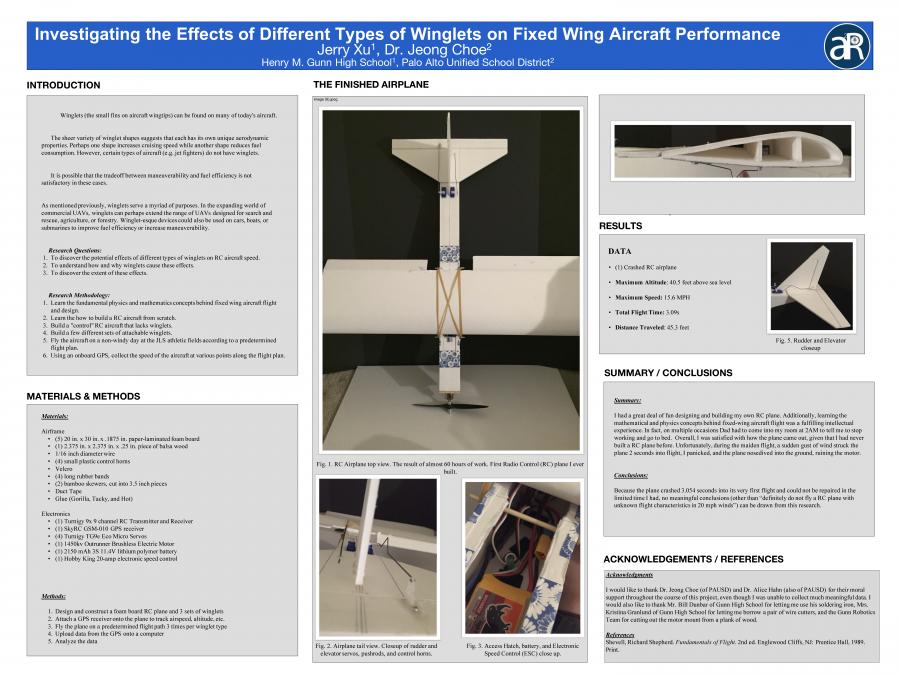Investigating the Effects of Different Types of Winglets on Fixed Wing Aircraft Performance by Jerry X.
Presentation
Summary
Winglets, which are the little fins found on aircraft wingtips, can be found on many of today's aircraft. The sheer variety of winglet shapes suggest that each has its own unique aerodynamic properties and effects. Perhaps one shape increases cruising speed while another shape reduces fuel consumption. However, it's interesting to note that jet fighters do not have winglets. It's possible that the tradeoff between maneuverability and fuel efficiency is not satisfactory. Winglets serve many purposes onboard aircraft. In the world of commercial unmanned aerial vehicles (UAV), winglets can perhaps extend the range of UAVs designed for search and rescue. Winglet-esque devices could also be used on any type of vehicle to improve fuel efficiency or increase maneuverability. This research aims to acheive the following: a) learn the fundamental physics and mathematics concepts behind fixed wing aircraft flight and design; b) learn the how to build a radio control (RC) aircraft from scratch; 3) build a "control" RC aircraft that lacks winglets. Build a few different sets of attachable winglets, 4) fly the aircraft on a non-windy day at the athletic fields according to a pre-determined flight plan, 5) using an onboard computer (and possibly GPS), collect various flight parameters (e.g. speed, flight time, altitude, etc.), 6) build the same RC aircraft in wind tunnel software. Using the software and the flight tests, determine if the winglets had any effects on speed and determine how the winglet caused an increase/decrease in speed.

